As distributed teams become the norm in modern workplaces, one challenge continues to affect performance and morale: isolation. Remote employees often miss out on casual conversations, spontaneous collaboration, and a sense of belonging, all of which are critical to engagement and retention.
For HR, tackling this issue isn’t just a nice-to-have, it’s a strategic priority.
Explore how HR can actively reduce isolation and strengthen the bonds within distributed teams.
To effectively address this challenge, we must first understand its root causes and broader impact on remote teams.
Understanding the Impact of Isolation in Distributed Teams
Isolation affects more than just social wellbeing, it also impacts productivity, innovation, and employee satisfaction. Members of distributed teams may feel disconnected from the company’s mission, unsure of their role, or hesitant to speak up. Over time, this leads to disengagement and even attrition.
HR must recognize that emotional and psychological support is as vital as providing the right tools. A proactive approach is needed to create a virtual environment where people feel seen, heard, and connected.
Foster a Culture of Communication
One of the most effective ways HR can support distributed teams is by fostering open, transparent communication. This goes beyond formal meetings. HR should encourage frequent check-ins, casual virtual meetups, and peer-to-peer interaction.
Introducing structured “culture rituals” like virtual coffee chats, team shout-outs, or Friday wins sessions can help bring a human element back into digital interactions. When team members feel comfortable reaching out, isolation naturally diminishes.
Leverage the Right Technology
To truly connect distributed teams, HR must advocate for and implement the right collaboration tools. Platforms like Slack, Microsoft Teams, or Zoom help maintain daily interaction. But more importantly, HR should ensure these tools are being used intentionally to build rapport and community while completing work tasks.
Providing onboarding support and training on using these tools effectively ensures no one is left behind, especially new hires who may struggle to integrate into a remote culture.
Encourage Inclusion and Belonging
HR plays a key role in ensuring every voice in distributed teams is heard. Promote inclusive practices such as rotating meeting times to accommodate time zones, using asynchronous communication, and highlighting diverse employee stories in internal communications.
Belonging is the result of intentional culture-building that ensures everyone feels part of the team, no matter their location.
Conclusion
The rise of distributed teams demands a shift in how HR approaches connection and engagement. By focusing on communication, technology, and inclusive culture, HR leaders can bridge the gap of physical distance and create teams that thrive together.













